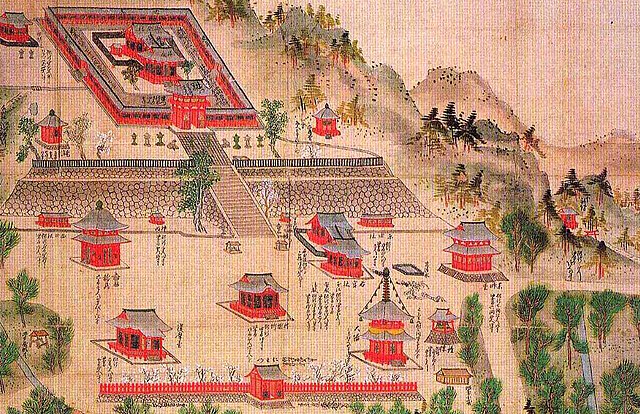In Japan, a chinjusha is a Shinto shrine which enshrines a tutelary kami ; that is, a patron spirit that protects a given area, village, building or a Buddhist temple. The Imperial Palace has its own tutelary shrine dedicated to the 21 guardian gods of Ise Shrine. Tutelary shrines are usually very small, but there is a range in size, and the great Hiyoshi Taisha for example is Enryaku-ji's tutelary shrine. The tutelary shrine of a temple or the complex the two together form are sometimes called a temple-shrine . If a tutelary shrine is called chinju-dō, it is the tutelary shrine of a Buddhist temple. Even in that case, however, the shrine retains its distinctive architecture.
a typical Chinjusha seen on a temple complex
Motoyama-ji's chinjū-dō
Hiyoshi Taisha is Enryaku-ji's tutelary shrine, one of the largest such shrines
A Shinto shrine is a structure whose main purpose is to house ("enshrine") one or more kami, the deities of the Shinto religion.
Two women praying in front of a shrine
Mount Nantai, worshiped at Futarasan Shrine, has the shape of the phallic stone rods found in pre-agricultural Jōmon sites.
An example of jingū-ji: Tsurugaoka Hachiman-gū-ji in an old drawing. In the foreground the shrine-temple's Buddhist structures (not extant), among them a pagoda, a belltower and a niōmon. The shrine (extant) is above.
Mount Fuji is Japan's most famous shintai.







